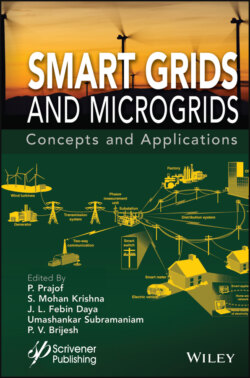Читать книгу Smart Grids and Micro-Grids - Umashankar Subramaniam - Страница 38
2.4.1 DC-DC Converter
ОглавлениеDC-DC converters is a power electronic circuit that converts the DC source’s voltage level to the desired DC output voltage level. DC-DC converters are primarily categorized into three types such as step-down (buck) converter, step-up (boost) converter, and bidirectional DC-DC converter. A step-down converter provides lower voltage output than the input source voltage, whereas a step-up converter raises the DC source voltage to a higher output voltage. The bidirectional DC-DC converter operates in both step-down and step-up modes of conversion with a bidirectional power flow. The DC-DC converter is used for the MPPT operation of photovoltaic (PV) microgrid and the association of the BESS to the DC link of the grid.
Table 2.2 Comparison of physical characteristics for various kinds of energy storage [5, 15].
| ESS | Power (MW) | Energy density (Wh/kg) | Power density (W/kg) | Discharge time | Response time | Efficiency (%) | Capital cost ($/kWh) | Life-time (years) | Cycling times |
| PHS | 100 - 5000 | 0.5 - 1.5 | - | 1 - 24 hr. | Minutes | 70-80 | 5 - 100 | > 50 | > 15,000 |
| CAES | 5-300 | 30-60 | - | 1-24 hr. | 1-10 min | 41-75 | 2-50 | > 25 | > 50,000 |
| FESS | 0.25 | 5-30 | 400-1500 | Sec. - hr. | < 1 sec. | 80-90 | 1000 - 5000 | 15-20 | > 15, 000 |
| SMES | 0.1-10 | 0.5-5 | 1-10 | m. sec - 8 sec. | < 5 sec. | 75-80 | 1000 - 10,000 | - | > 50, 000 |
| SC | 0-0.3 | 0.05 - 15 | 5-10 | msec. - lhr. | < 1 sec. | 85-98 | 300 - 2000 | 4-12 | > 50, 000 |
| Pb-Acid | 0-20 | 30-50 | 75-300 | Sec. - hr. | < 10 sec. | 75-90 | 200 - 400 | 3-15 | < 2, 000 |
| Li-Ion | 0-0.1 | 75 - 200 | 150-300 | Min. - hr. | < 10 sec. | 65-75 | 600 - 2,500 | 5-100 | < 10, 000 |
| Ni-Cd | 0-40 | 15-55 | 150-200 | Sec. - hr. | < 10 sec. | 60-80 | 800 - 1500 | 5-20 | 1500 - 3000 |
